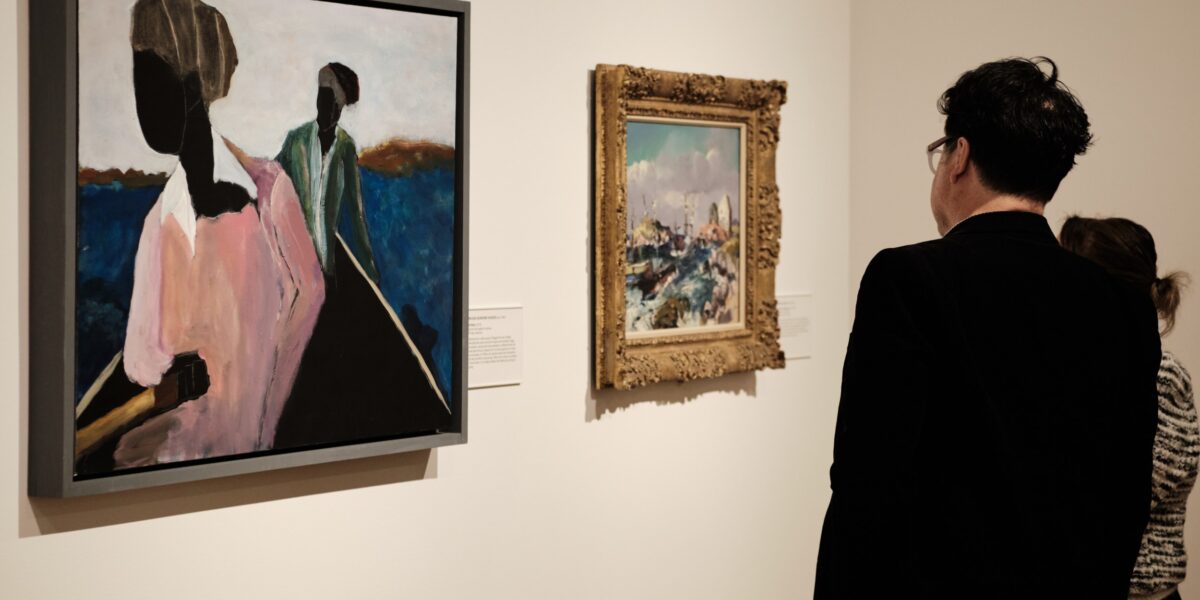
The Wyeths: Three Generations of Artistic Legacy in Coastal Maine
Not too long ago, the vast majority of the nation’s best museums could only be found clustered in the big cities. And while there are still obviously some of the best, high-grade collections in places like New York City and Washington D.C., past decades have revealed the steady growth of a new era of museums. An age where equally world-class museums spring up in unlikely small towns, often with a unique, regional focus.
Farnsworth Art Museum, in the small coastal town of Rockland, Maine, is the perfect example of this phenomenon. Founded in 1948, the museum displays approximately 15,000 works of American art from the 18th century to the present day, the quality of which could stand up to any major metropolitan collection. Particularly, the museum’s vast collection of works from three generations of Wyeths– the famous family of artists renowned for capturing the essence of the American experience. From the Wyeths to Edward Hopper to George Bellows, the museum’s perhaps most interesting aspect is the mission and tether that holds the impressive collection together: to celebrate Maine’s role in American art.
We spoke with David Troup, who’s worked for Farnsworth Art Museum for sixteen years as Communications and Marketing Manager, to learn more about how the museum achieves this distinct mission.
How the Farnsworth Celebrates Maine’s Place in American Art
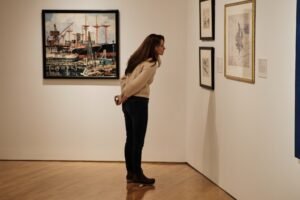
The artists whose work is displayed at the museum have various levels of connection to the state, but all have something in common: Maine has at some point inspired their artistic works.
“When you look at the names of the artists who have called Maine home or who have come to Maine in years gone by– including the 19th century, 20th century and still today– because of the lower cost of living, you’re dealing with some of the greatest names in American art history. From the Bellows and the Homers to Hopper,” Troup said.
The lower cost of living and natural beauty are the two main draws that have long had artists flocking to Maine.
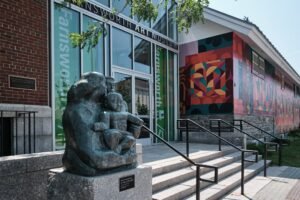
“The great move that happened post-World War II when Alex Katz and so many of his contemporaries moved up to Maine, because they had been working in tiny lofts in New York City and suddenly found they could– for a tenth of the price– get a house with some land,” Troup said.
Instead of taking the subway for an hour to find a natural setting for plein-air painting, these artists could step into their own backyard and find immediate inspiration. So whether from artists who were born and raised in Maine or spent time working in the Pine Tree State, each of the Farnsworth galleries celebrate one aspect or another of their Maine-focused mission.
Three Generations of the Wyeth Family at the Farnsworth
Another notable aspect of the Farnsworth’s collection is their Wyeth connection. The museum displays artwork from three generations of the renowned family of American artists, from N.C. to Andrew to Jamie. Because of its association with the Wyeth Foundation of American Art, the museum has access to the 7,000 works by Andrew Wyeth, only 11% of which have ever been exhibited. Troup said over the next few years, Farnsworth Art Museum and Brandywine River Museum in Chadds Ford, Pennsylvania will be exploring and revealing these works through many different themes.
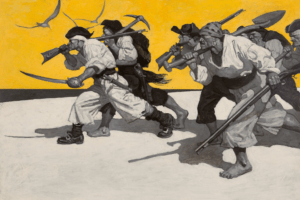
N.C. Wyeth, Treasure Island, 1997
The Wyeths’ connection to Maine began in 1920 when N.C. Wyeth– legendary illustrator and patriarch of the artistic family– bought a country house in Port Clyde, Maine (about 20 minutes away from the current location of the Farnsworth). Thus the family spent their summers in the area, as the next two generations of Wyeths came of age into their own artistic careers.
Andrew Wyeth, son of N.C., is celebrated for his realistic and detailed depictions of rural life and landscapes, particularly in the Brandywine Valley of Pennsylvania and coastal Maine.
“The works of Andrew Wyeth that we show here in our collection were all painted here in Maine,” Troup said. “If you go to the Brandywine in Pennsylvania, they showcase the works he did at Kuerner Farm and near Chadds Ford. So those are the Pennsylvania works and we’re split very clearly along those lines.”
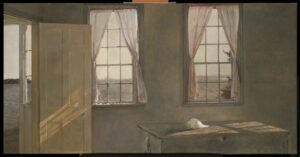
Andrew Wyeth, Her Room, 1963
Son of Andrew Jamie Wyeth’s art has continued the family tradition of capturing the landscapes and people of rural America, but with a more contemporary and often surreal twist.
Troup said Farnsworth’s relationship with the Wyeths goes back to 1944, four years before the museum opened to the public. Many times, a museum is started when an art collector dies and their personal collection becomes a museum.
“That’s not what happened here,” Troup said. “What happened here was that Lucy Farnsworth left $1.3 million for a museum to be built, but there was no collection. A man by the name of Robert Bellows started purchasing works to add to the collection. And one of the first artists he zeroed in on was a young, still unknown Andrew Wyeth in New York. He purchased six works in 1944, four years before the museum opened.”
Planning a Visit to the Farnsworth
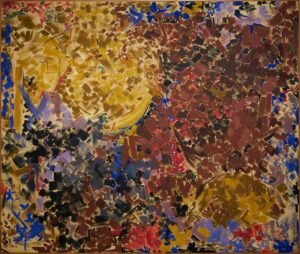
Lynne Drexler, Saha, 1959, Oil on canvas
Maine may be the common link between all the work at Farnsworth, but that inspiration manifested across a wide array of artistic forms. The museum is home to art of every style of work, from oil paintings to sculpture to video art. You have Lynne Drexler’s abstract bursts of color in oil paint. Jason Brown (also known as Firefly) is a member of the Penobscot Nation who works in digital film and composes his own music. Jeremy Frey is renowned as a skilled basket weaver, working out of Maine to create his masterpieces with ash and porcupine quills. The variety and creativity Farnsworth has on display truly has no bounds.
Reflecting its setting in the small Maine town, the museum atmosphere is warm, personable and friendly. It’s primarily a gallery-centric experience with some immersive, video displays as well.
Apart from the main museum, you can visit The Farnsworth Homestead, the 19th-century home of museum benefactor Lucy Farnsworth. Additionally, there’s the Olson House, a National Historic Landmark well-known as the setting of Andrew Wyeth’s “Christina’s World” and around 300 other paintings.

Andrew Wyeth, Christina’s World, 1948
As a New Yorker with an art background, Troup recalled visiting Farnsworth Art Museum for the first time when he and his wife moved to Maine.
“I walked into Farnsworth and I really couldn’t believe the quality of the works that were on view,” Troup said. “It’s not what I was expecting in a small town on the seaside in Maine.”
Goes Well With This Journey:
Islands and Inlets: Maine Maritime Adventures: With thousands of miles of jagged coastline; countless rugged islands, inland lakes and ponds; a labyrinth of streams and rivers; and a culture still driven by nautical history, Maine is a place best discovered on the water. Whether pulling traps on a lobster boat, paddling deep-woods ponds in search of moose, or commuting between islands by mail boat, this adventurous Maine road trip offers a new experience on the water nearly every day. In the evenings, rest your head on dry land while listening to lapping water and loon calls from your secluded inn or lodge.
